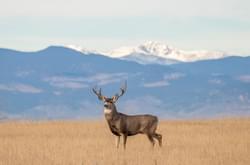




Planning Trails with Wildlife in Mind

The checklist focuses specifically on wildlife issues of trail planning and is designed to mirror comprehensive planning processes. This should make it easier to integrate the information into the ways trails are already being planned. If you are beginning to plan a trail and want to find appropriate ways of including wildlife issues, the checklist will raise important questions through each step of the planning process.
Look at the broader landscape.
Develop preliminary goals for the project.
Keep wildlife concerns within the focus of the project vision
Look for opportunities to coordinate your trail project with conservation and other complementary projects.
Create a profile of the kinds of users who are likely to use the trail.
Identify the groups interested in wildlife in your trail area.
Share your ideas and findings with other community members, including both trails and wildlife enthusiasts, property owners, and land managers.
Meet with agency planners.
Start a public discussion of the trail and its implications for wildlife.
Determine the physical extent of the project.
Conduct a preliminary biological inventory.
Determine the habitat/ecosystem types present in the area of the proposed trail and the potential species or communities of special concern.
Draw inferences from scientific studies done in similar habitats or with similar wildlife species.
Learn from others who have completed projects with similar wildlife issues.
Review data found to date and conduct a site visit with a wildlife biologist or other scientists to identify potential wildlife opportunities and constraints.
Identify seasons of special concern for the important wildlife species or communities.
Identify important plants in the area.
Evaluate the extent of existing impacts to wildlife and the landscape.
Take a step back.
Formalize the project goals.
Sustaining Wildlife With Recreation on Public Lands
posted Nov 25, 2023
Humans and wildlife interact in multifaceted ways on public lands with both positive and negative outcomes for each group. When managed well, wildlife-based tourism and other forms of recreation can benefit conservation goals.
Environmental Impacts of Winter Recreation
posted Nov 25, 2023
Regardless of our intentions, many species perceive humans as a threat and respond accordingly. In general, animals respond to threats by first increasing vigilance (time spent looking around versus foraging), and running away if the threat is perceived to be imminent.
posted Nov 24, 2023
Winter recreation is a rapidly growing activity, and advances in technology make it possible for increasing numbers of people to access remote backcountry terrain. Increased winter recreation may lead to more frequent conflict between recreationists, as well as greater potential disturbance to wildlife.
Guidelines for Managing and Restoring Natural Plant Communities along Trails and Waterways
posted Sep 18, 2023
These guidelines are designed to assist resource managers in conducting management activities that enhance the quality of natural plant communities, wildlife habitat, regional landscape integrity and visual quality, particularly as related to planning, development, and maintenance of trails, water trails, and water access sites.
1,067 views • posted 09/08/2018